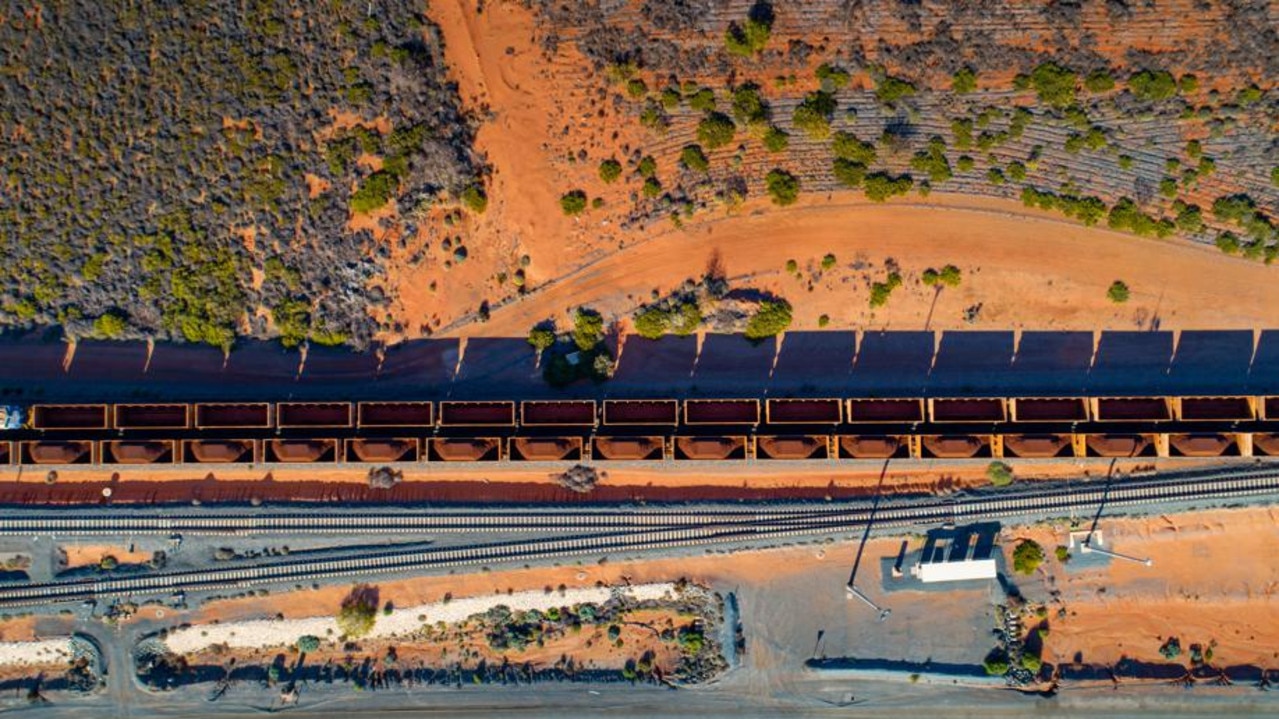Iron ore price dips, sparking speculation over China’s long term trade plan with Australia
Recent events in the iron ore industry have raised concerns about its stability, with fresh questions swirling around our key trading partner.
Recent events in the iron ore industry — a critical part of Australia’s economy — have raised concerns about its stability, with questions around China’s relationship as Australia’s key trading partner swirling.
Although the price of iron ore — a key ingredient in making steel — remain high, and China has promised to increase demand, there are signs of trouble beneath the surface.
The price has fallen in recent days — and Chinese mills are now mysteriously buying lower-grade iron ore at a premium. According to analysts, the development suggests that something significant is happening in the Chinese iron and steel industry. What exactly is going on though, is unclear.
What is clear is that any major harm to the iron ore industy would cripple Australia — especially as coal and gas prices have dropped.
Analysis of Australian company tax paid by iron ore miners BHP, Rio Tinto, FMG, Hancock Prospecting and Mineral Resources reveal the quintet shelled out a combined $15.4b in 2020.
At a glance, the iron ore market appears as strong as ever, with prices resilient despite recent falls. However, according to The Australian’s Robert Gottliebsen, there are “unusual events taking place in the market”.

Over the weekend, the iron ore price fell some $US7 a tonne to $US108. The market explanation was that there had been a 19 per cent fall in Chinese housing during the first quarter of 2023.
However, the margin to allow the conversion of iron ore to steel has become far too low, according to analysts.
If China is using the conventional blast furnace-based process, the higher prices being paid for lower-grade ores make “no sense”, according to Gottliebsen, who suggests something significant is starting to happen in the Chinese iron and steel industry.
It is possible that China has moved ahead in their research on extracting valuable minerals from iron ore, giving them a competitive edge in the market and ultimately hurting Australia’s mining industry.
In Perth, Fortescue has a laboratory that appears to be examining the economics of extracting these minerals from the ore. But China might have surged ahead of Australia in this aspect of research.
China’s Shougang Group, one of the world’s top 10 steel producers, has signed a memorandum of understanding with London’s Rio Tinto to “promote research, design, and implementation of low-carbon solutions for the steel value chain”.
The deal covers low-carbon sintering technology, blast furnace and basic oxygen furnace optimisation, and carbon capture and utilisation.
Australian mining giant BHP has remained confident that despite the green steel thrusts, demand for its ore would remain strong because China has invested large sums in new blast furnaces that will require BHP’s high-grade ore.

In all areas of carbon emissions research, individual corporations and countries will gain significant advantages when they achieve breakthroughs in research.
According to Australian business analysts, Australia needs to find out exactly why China is paying a higher price than normal for lower-grade ores and why the steelmaking margin has gone so low.
Iron ore is mined mainly in the red dirt of Western Australia’s Pilbara region and pumps an astronomical amount of money into Australia’s economy.
It is the cash cow that keeps on giving for Australia as its export values are estimated to have risen from $103 billion in 2019–20 to $149 billion in 2020–21 — reaffirming our spot as the world’s biggest exporter of one of the most important minerals to the global economy.
It is also by far Australia’s biggest export and the majority of it is shipped off to China which consumes a massive 61 per cent of the world’s iron ore.



